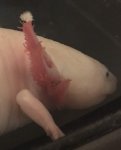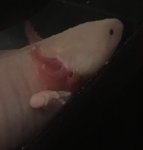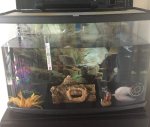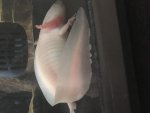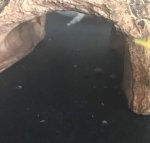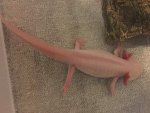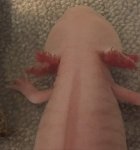Hello everyone!
I just found some white fuzzy matter on my axie's gill. I tried to knock it off blowing some water towards him using a Baster (gently) but it didn't move and he actually seemed quite bothered about it. Other than this he is fine, eats and moves around the tank fine enough. We also find these fuzzy white "balls" in the tank, either the bottom or some of the ornaments.
Water parameters are usually fine, ammonia just tested and it's a .25, everything else good as well, temperature 18 degrees.
I attached a picture hoping someone with more experience could help us make sure this is indeed fungus and not something else. We did notice that same gill had a bit missing some days ago... could it be just regrowing ?
Thanks in advance!
I just found some white fuzzy matter on my axie's gill. I tried to knock it off blowing some water towards him using a Baster (gently) but it didn't move and he actually seemed quite bothered about it. Other than this he is fine, eats and moves around the tank fine enough. We also find these fuzzy white "balls" in the tank, either the bottom or some of the ornaments.
Water parameters are usually fine, ammonia just tested and it's a .25, everything else good as well, temperature 18 degrees.
I attached a picture hoping someone with more experience could help us make sure this is indeed fungus and not something else. We did notice that same gill had a bit missing some days ago... could it be just regrowing ?
Thanks in advance!

